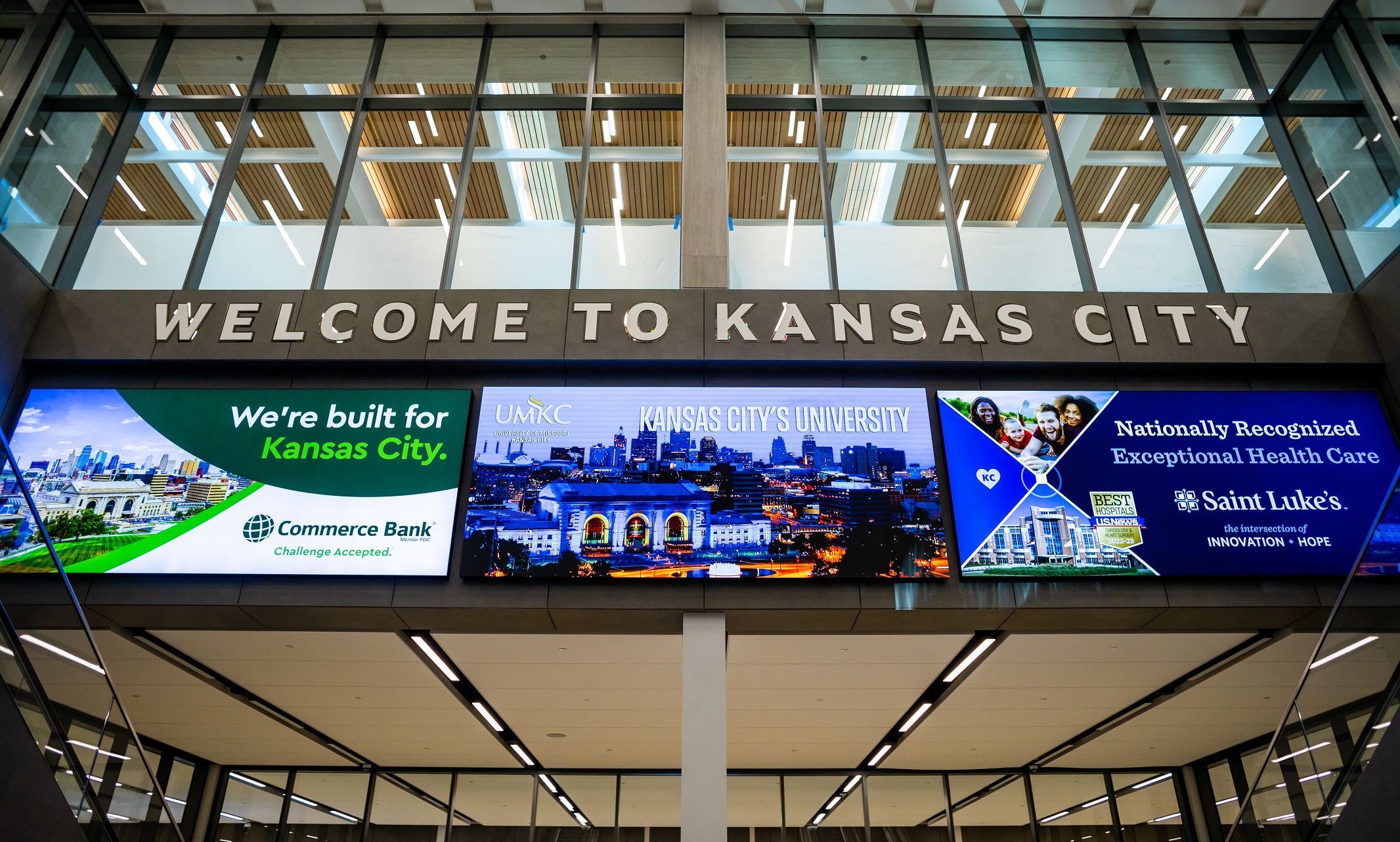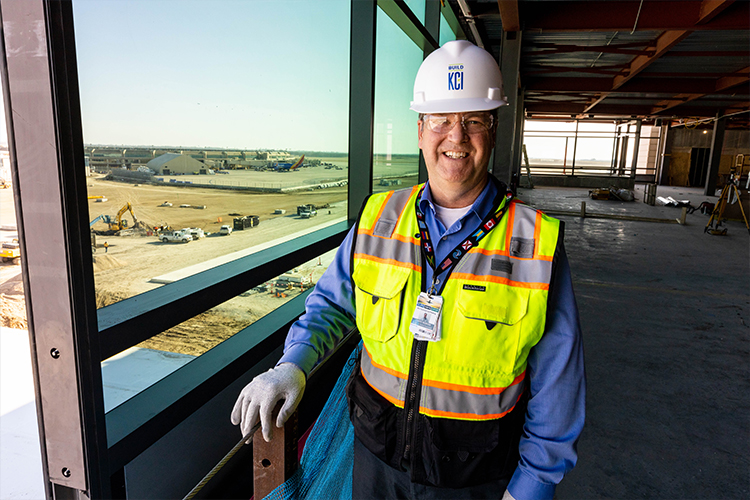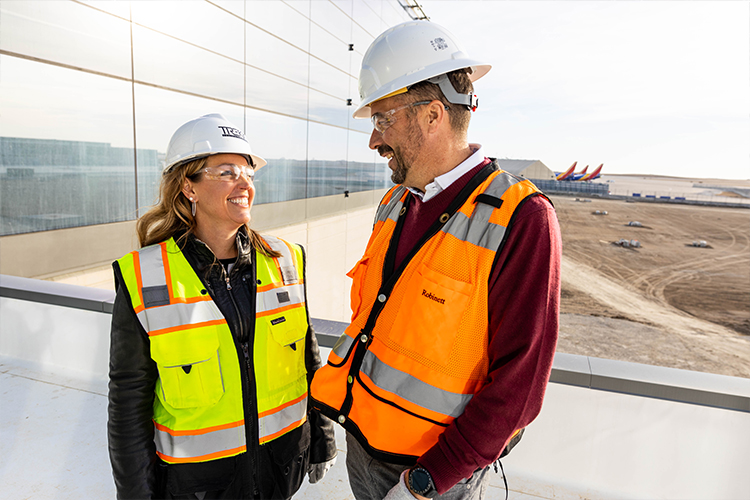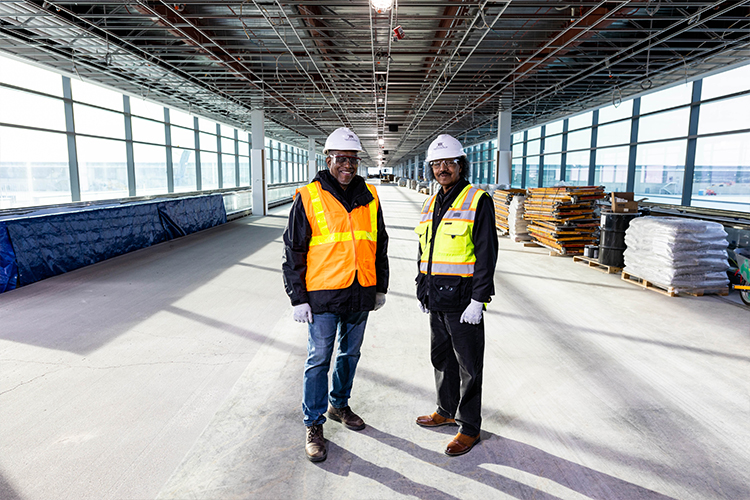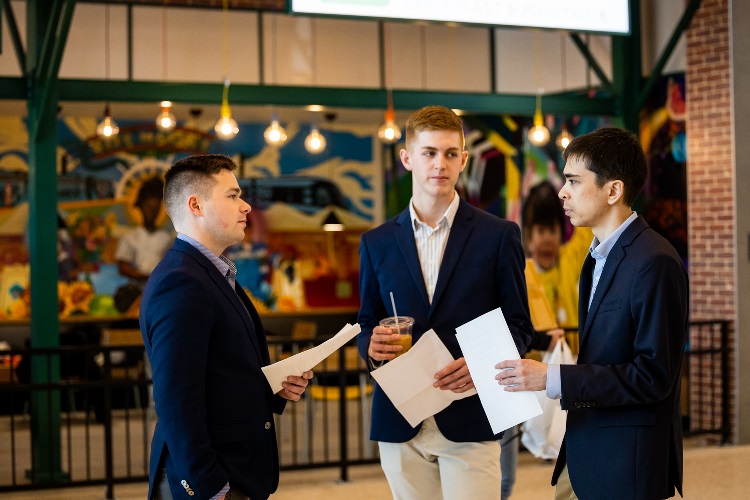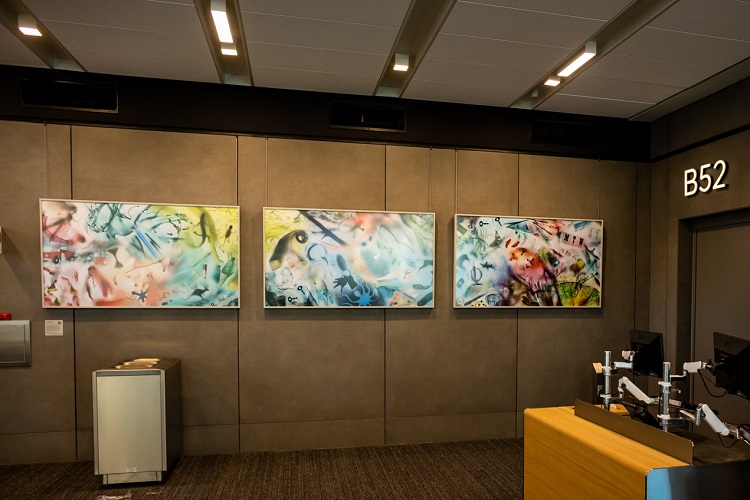It’s only fitting that Kansas City’s university would be involved throughout the largest infrastructure project in the history of the city. The new KCI Airport terminal is open to travelers and UMKC students, alumni and faculty helped make it happen.
Communication
Before any construction happened, Joe McBride (B.A. ’86) had one of the earliest roles to play in the project: getting the community on board. As senior manager of communications for the Kansas City Aviation Department, McBride had to convince people of the need for a new terminal, a sometimes-uphill battle as many Kansas Citians liked the convenience of the old airport design.
“I was happy that people had a sense of ownership of it,” McBride says. “That’s good.”
After the project was approved, McBride monitored public meetings and comments to ensure that travelers’ concerns were taken into consideration during the design process. His role in the project was truly from beginning to end, as he also played a key role in planning the grand opening.
“I think after all the labor and toil it will be, ‘Wow, it’s finally here,’” McBride said. “And watching people come into the terminal, checking in with the wow and the awe in their eyes, that’s going to be a fun, long, proud day.”
Design
For Kimberly (B.S.E.E. ‘95) and Trent (B.S.C.E. ’95) Robinett, the chance to participate in the design of the new airport had as much personal significance as professional.
“The terminal project is one of those signature projects that impacts the entire city,” Kimberly said. “It is the first thing about our city that visitors experience. But beyond that, we are hopeful that the new terminal will improve the lives of Kansas City residents by making it more attractive for airlines to add additional connections out of Kansas City.”
The Robinetts cofounded TREKK Design Group. TREKK helped develop the infrastructure for the new airport. This included locating and surveying existing utilities.
“Our crews were challenged with untangling what looked like a bowl of spaghetti,” she said.
From there, they worked with subcontractors to design critical systems for the new terminal, including drainage and ground service equipment. These systems have a substantial impact on travelers, but unlike food vendors or retail, travelers are usually unaware of their existence. But, according to Kimberly, recognition has never been front of mind for the Robinetts.
“We are so grateful for the opportunities that we have had to work with leaders across Kansas City in building its future and making a meaningful contribution toward improving lives.”
Engineering
Led by CEO Hagos Andebrhan (B.S.C.E. ’78) and president Leonard Graham (B.A. ’74), Taliaferro & Browne Inc. is the lead landside civil engineer company for the terminal project. Although they’ve been involved in significant projects before, including renovations of Arrowhead and Kauffman Stadium and the Kauffman Performing Arts Center, they view this project as notable in its own way.
“It is the largest single infrastructure project in the city’s history, and the largest construction project in which our firm has lead-design responsibility,” says Graham. “The KCI new single terminal project is probably one our proudest efforts yet.”
The firm’s responsibilities included project management and coordination, design of roadways, including roundabouts and bridges, street and parking lot lighting, surface parking lots and utility relocation. And if that wasn’t enough, the firm was also responsible for designing the temporary traffic modifications that kept travelers moving to the old terminals throughout the project.
“The new $1.5 billion KCI single terminal is a project like no other,” says Andebrhan. “It is a once in a lifetime project for the city and everyone involved in its construction.”
Consulting
Four students from the Bloch School of Management, Msgana Zegeye, Nicolas Hartung, Erik Klaas and Henry Meeds, consulted with vendor management company Vantage Airport Group. The students researched how to attract workers and meet their needs, particularly employees of the restaurants and other airport vendors. They made recommendations regarding which employment websites to use, transportation needs of employees, and how to recruit workers from downtown Kansas City.
“Participating in a once-in-a-generation project and making a meaningful impact on my city has been an unforgettable experience,” Meeds said.
Hartung added, “Not only did we gain real-word experience, we were also given the opportunity to be part of Kansas City’s history. Working on this project has showed me that a classroom is not the only way to learn essential skills in college."
Art
Kati Toivanen, professor of studio art, was one of 28 artists selected out of more than 1,900 applicants to create a piece of art for the new terminal. This piece is Toivanen’s first permanent commission in the city, and it represents an experience she knows well: traveling with family.
Toivanen is from Finland and travels frequently to visit family. When her son was young, much of her luggage space was dedicated to his needs and entertainment. Her artwork, titled “I Spy Carry-on” is reminiscent of those days.
“The collection of objects in the project reflects this universal experience of family travel,” Toivanen said. “It is my hope that the project will provide entertainment for both parents and children as they explore and discover familiar objects in the images.”
Spoiler alert: look closely and you’ll find a kangaroo shape that signifies Kansas City’s university.

